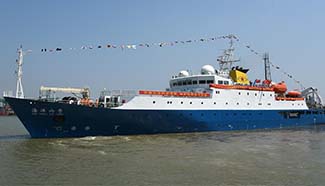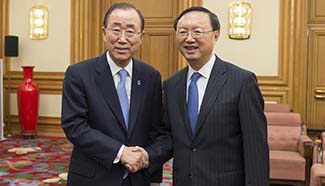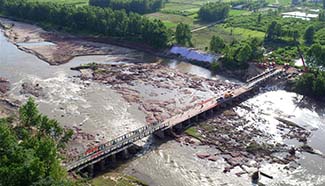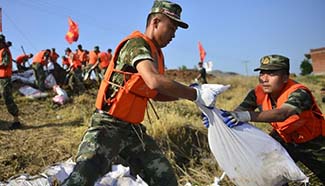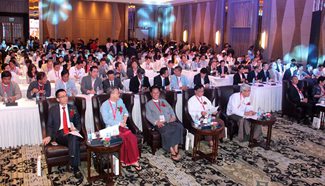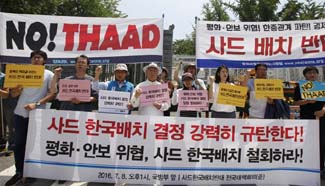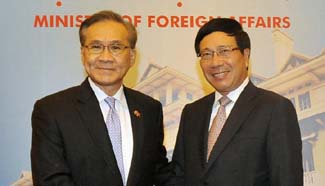by Xinhua writers Du Baiyu, Luo Jun
BEIJING, July 8 (Xinhua) -- The controversial deployment of the Terminal High Altitude Area Defense (THAAD) system on the Korean peninsula will inevitably push seoul to the forefront of military confrontation and push Northeast Asia further away from security and stability.
The United States and South Korea Friday decided to deploy the THAAD system on the Korean peninsula despite strong opposition from neighboring countries.
The adoption of THAAD is an unwise decision in light of the complicated situation on the Korean peninsula. Though considered by Seoul as a resort of protection, the U.S. anti-ballistic missile system is detrimental to the security interests of other countries in the region including China.
The move will not help denuclearize the peninsula, but escalate tensions among neighboring countries, as it will disrupt strategic balance in the region.
The root cause for regional tension and the Democratic People's Republic of Korea (DPRK)'s pursuit of nuclear and missile power lies in the U.S. desire for hegemony in Northeast Asia and its hostile policies towards the DPRK.
Washington's despicable plot to introduce a regime change by stifle the country with unilateral sanctions and pressure on the "human rights" issue, now with the deployment of THAAD, risk pushing the DPRK to a corner where it sees a need to fight back by advancing nuclear and missile projects.
Unfortunately, though a DPRK government spokesperson said on Wednesday that the country will seek to denuclearize the peninsular if the U.S. and South Korea promise it substantial security assurance on five fronts, the two countries responded negatively by saying Pyongyang was trying to break their alliance.
Without consideration for all parties' interests, international disputes can not be solved, especially by means of imposition of sanctions and confrontation.
Any move taken by a country to safeguard its own security should not harm another country. To address the DPRK's security concern and realize denuclearization of the Korean peninsula, China has put forward a dual-track approach.
Beijing has proposed that denuclearization of the peninsula and transformation from armistice regime to a state of peace proceed together, believing this is the constructive and final way to solve the security dilemma.
Washington and Seoul's claim that THAAD only aims at threat from the DPRK is hardly convincing, as the system's hardware and functions far exceed South Korea's actual defense needs.
The true purpose of deploying THAAD is to incorporate South Korea into the U.S.-designed regional military structure that can support its Rebalance to Asia strategy targeting China, according to Su Hao, a professor at the China Foreign Affairs University.
The U.S. hegemonic move in Asia-Pacific is likely to trigger defensive counter-measures from regional countries.
Later on Friday, Russia's Arms Committee warned that missile units could be deployed in eastern Russia in response to the deployment of THAAD in South Korea.
It is highly advisable for Seoul to see clearly possible misfortune the THAAD deployment could bring to Northeast Asia and the damage it will inflict on China-South Korea friendly relations and to put a break on such a destructive move.




